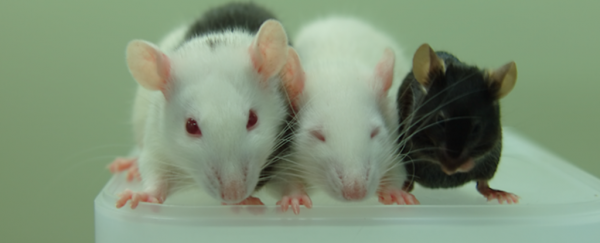Researchers have managed to reverse type 1 diabetes in mice by giving them a transplant of pancreatic tissue grown inside rats.
The pancreatic tissue was grown from stem cells taken from healthy mice, which means the diabetic mice accepted the transplant without needing immunosuppressive drugs - and the new pancreatic cells successfully managed their blood sugar levels for more than a year without any other medication.
The results suggest the same technology could one day be used to treat humans, and possibly improve the success of all types of organ donations.
Type 1 diabetes occurs when the immune system destroys certain tissues within the pancreas, such as the pancreatic islet cells, which are responsible for producing insulin.
Without insulin, the body has a hard time getting glucose from the bloodstream into the body's cells, which is why diabetics need to rely on regular injections and blood-sugar monitoring to manage their condition.
But researchers are constantly looking for a more effective, long-term solution.
In the 1970s, scientists found some success transplanting clusters of so-called islet cells in lab mice, prompting hopes that tissue-transplants were just around the corner for diabetics. But progress has been slow, in spite of advances in recent years that have seen transplanted cells survive longer.
Yet these transplants still require a lifetime of antirejection drugs.
Having islet cells that the body accepts as its own would help do away with these antirejection medications, which mask the foreign appearance of another individual's tissues, and scientists might have found a way to do just that.
Reporting in Nature, a team from Stanford University and the University of Tokyo in Japan showed it was possible to use pluripotent stem cells to grow replica pancreases, which could be implanted in mice without requiring a lifetime of immunosuppressive drugs.
Pluripotent stem cells are cells that don't have a clear identity. Engineered to lack specific 'name tags', they can be grown into nearly any tissue in the body, while also lacking markers that could identify them as belonging to another individual.
This makes them perfect for implanting into different animals.
To turn these pluripotent stem cells into pancreatic tissue, the team implanted stem cells from mice into the embryos of rats, which had been engineered to lack a pancreas of their own.
As the rats grew, their bodies were forced to use the mouse cells to grow new pancreatic tissue in order to function normally. Given the rats had yet to develop their own immune system when the stem cells were injected, their bodies accepted the tissue as their own.
Once the rats had developed their new pancreatic tissue, clusters of a few hundred thousand of these islet cells were then transplanted into the kidneys of mice with diabetes.
Not only did the rat-grown pancreatic tissue work at balancing the blood sugar levels of the recipient for more than a year after the transplant, the process worked by transplanting as few as just 100 islets.
"Furthermore, the recipient animals only needed treatment with immunosuppressive drugs for five days after transplantation, rather than the ongoing immunosuppression that would be needed for unmatched organs," Nakauchi explained.
This is a big step, because finding a way to reduce the risk of rejection would help any kind of organ or tissue transplants. And given the shortage of organ donors, there's a strong need for tissue that can be grown to order.
It's yet to be seen whether this same approach would work in humans - and how long-lasting the results are.
But it's a promising first step to helping the hundreds of thousands of people with diabetes across the world - not to mention the scores of other conditions that could benefit from lab-grown transplants.
This research was published in Nature.
